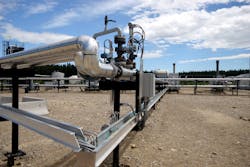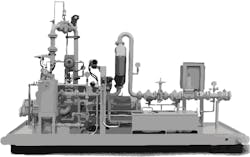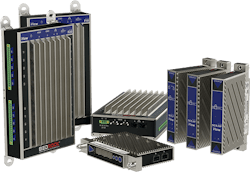Each year, there are billions of dollars in oil and gas transactions, with buyers and sellers having much vested in ensuring an accurate record of the transfer. Inaccuracies on both sides of the transaction may potentially result in windfall profits for one party and significant losses for the other. Lease allocation (or automatic) custody transfer (LACT) is the best way to ensure fair and effective ownership exchange of hydrocarbon fluids.
LACT measurement includes calculations with flow-weighted averages for process variables, such as temperature and pressure, and a detailed record of each transaction. Included within each detailed trasaction are all logs and records that serve to further validate measurement. The measurement record reveals if the flow rate is more or less than the validated proven rate of the meter, providing evidence that the flow rate is within acceptable range of the current meter factor. As little as a half-degree difference in temperature may mean multiple thousands of dollars in loss. The flow computer must also accurately flag any change that may affect measurement, which helps ensure fair and effective compliance for custody transfer contracts.Most legacy flow computers were developed during the infancy stages of digital capability. Today, we are seeing significantly more complexity at the operations level, while at the same time, both automation and information technology are also making quantum leaps in connectivity and performance. The world of LACT is now poised to benefit from these advances.
Amid this evolution, legacy vendors are obsoleting their current systems and offering new models, but with such rapid advances in technology, even their new offerings become quickly out of date. A new generation of flow computers is needed to move LACT to a modern level of performance and cost efficiency. Essential characteristics of this next-generation flow computer must include the following:
- Proven accuracy and reliability
- Higher processing power
- Integrated flow measurement, control and communication
- Low development costs
- Software-defined I/O
- Built-in cybersecurity protection and ruggedness
Proven accuracy and reliability
The need for proven accuracy and reliability must always top the list of requirements for any flow computer. The American Petroleum Institute (API) has worked closely with oil and gas measurement company Flow-Cal to develop code for proving, measuring and testing flow calculations, and it is a leading worldwide provider for API calculations code. Flow-Cal is the benchmark against which the API validates flow technologies. Next-generation flow computers should use this type of proven code for accurate and reliable flow measurement.
Higher processing power
Large memory — both program RAM and flash storage — is critical for the next generation of flow measurement. Memory affects the number of meter runs, reports and sockets that can be utilized. Most existing legacy systems, however, have only enough memory to support a few Ethernet sockets, which limits the number of devices that can communicate simultaneously with the end device. Once all sockets are taken, the device is no longer accessible via Ethernet, and if the HMI socket is also already taken by another polling device, the screen drops communication altogether, leaving local operators or truck drivers without a communication path to the flow computer. Memory limitations also restrict simultaneous calculations for gas and liquid meter runs, the number of reports that can be stored, and audit/alarm log size.
Integrated flow measurement, control and communication
Many customers have been using their legacy flow computer as a PLC/RTU as well, but the programming capabilities on the legacy flow computers are limited, which restricts what they can do. Using a system in which controller and flow calculations are tightly integrated, however, removes the need to invest in an additional PLC or try to manage tomorrow’s data-intensive calculations from a flowmeter.
Given the limited memory capacity of legacy systems, maximizing the number of available meter runs while also generating reports and device communications has been a challenge. Integrating control functionality was all but out of the question. Next-generation flow computers, by contrast, will require advanced multicore digital semiconductors to achieve maximum computation and communication performance necessary to enable concurrent operation of both a high-performance PLC/RTU and high-performance flow computer.The more complex the operation, the greater the need to sync and phase terminals and facilities. Today, many oil fields remain unconnected, but as producers face more difficulty finding talent, they will need increased capability for remote operations and more flexibility to take advantage of the cloud and other emergent technologies. Support for open programming standards such as IEC 61131-3 contributes to this.
With a nonintegrated system, users must generate a separate database to address control requirements. The data may appear as a block from which they can grab real-time flow data and calculated variables, such as temperature and pressure, and perform some analysis, but they cannot access much history or connect to anything else.
Moreover, as more oil and gas companies employ cloud and digital communications, support for open communication protocols such as OPC UA and MQTT is required. These are increasingly becoming the protocols of choice for communication among diverse applications and devices.
Low development costs
Rather than having separate PLC and flow measurement devices, each with a unique software package and the need for training that goes with it, an integrated platform makes it easier for LACT skid makers and end users. Tightly integrating flow computing and control within the same device enables oil and gas automation technicians to program and configure using a single set of tools. This boosts productivity and accuracy, which translates into higher profits. Because of the significant impact on the bottom-line resulting from accurate measurement, flow applications must be protected to prevent unwarranted changes to the application. Additionally, all performance metrics must be monitored so the user can be assured that measurement performance is not affected by the control applications.
Baseline licenses for the engineering environment of traditional flow computers or PLC/RTUs can range from $1,000 to almost $10,000 per installation, and there are typically licensing costs for additional applications. Using an open IEC 61131-3 compliant engineering tool set can significantly reduce development costs.
Software-defined I/O
No matter how capable the flow computer, if it is difficult to use, it will be less effective, as well as more expensive to own. The next-generation flow computers must have software configurable I/O to make it easier for the system developer. If a typical flow measurement application required SCADA mapping of live and batch data, temperature and pressure might be mapped to hard-coded device registers. The ability to predefine registers logically simplifies implementation and SCADA configuration.
Software configurable I/O has advantages in the field as well. Users can simply map to the right devices and protocol in the field. If revisions are required, they can reconfigure on-site without having to return to inventory to get a specific module type.
Maximum cybersecurity protection and ruggedness
Custody transfer operators are already implementing some degree of security, isolating their networks and their data from other parties in the transaction, so there is a firewall of sorts. But they are increasingly realizing the need for built-in cybersecurity, which goes well beyond trying to protect systems with passwords. If authentication and encryption are designed into the electronics, cybersecurity would happen at little or no incremental cost above the control unit itself.
Furthermore, because flow computing often takes place in remote, potentially challenging environments, physical security is also critical. Electronics must be housed in all-metal, tamper-proof enclosures that are sealed for protection from dust, moisture and other environmental assaults. They must function amid wide operating temperature ratings, for example, -40ºC to 80ºC, and be UL listed, Class 1, Division 2. And, because of the real potential of malware being embedded into electronic component supply chains, obtaining products in which the integrity of the supply chain can be guaranteed is increasingly important.
Conclusion
This is the best time to be evaluating flow computers. Existing systems have patches everywhere, and many may not even have SCADA or internet connectivity. Most users have already been notified that their current products are being phased out, and testing for newer offerings will begin soon.
As you evaluate the flow measurement technology that will take you into the digital future, be sure to factor in the next-generation capabilities discussed here. Integration of control and flow measurement, software-defined I/O, and intrinsic cybersecurity can all enhance the accuracy and reliability of your critical flow measurements and, of course, save costs.
Shawn Bellamy is founder and owner of G&C Optimization, a veteran-owned business based in Texas, specializing in development of measurement and control solutions for oil and gas companies, and is a Bedrock Automation integration partner.




